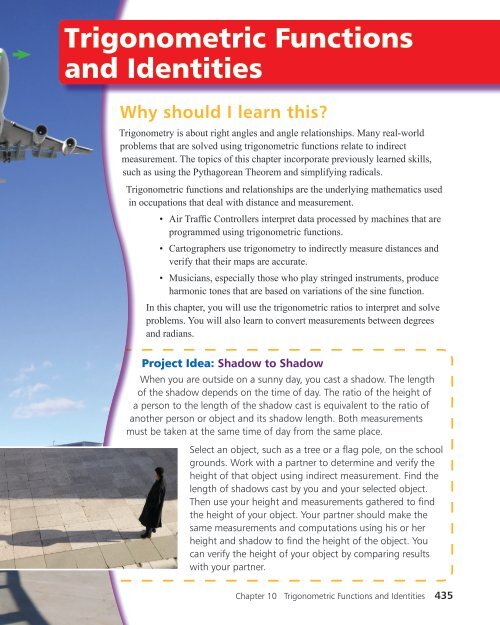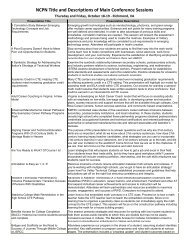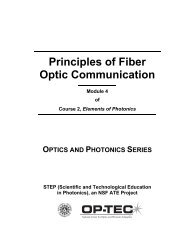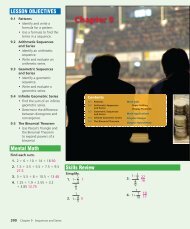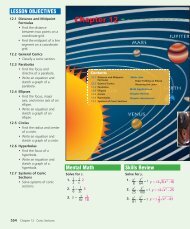Chapter 10 - NCPN
Chapter 10 - NCPN
Chapter 10 - NCPN
You also want an ePaper? Increase the reach of your titles
YUMPU automatically turns print PDFs into web optimized ePapers that Google loves.
Trigonometric Functions<br />
and Identities<br />
Why should I learn this<br />
Trigonometry is about right angles and angle relationships. Many real‐world<br />
problems that are solved using trigonometric functions relate to indirect<br />
measurement. The topics of this chapter incorporate previously learned skills,<br />
such as using the Pythagorean Theorem and simplifying radicals.<br />
Trigonometric functions and relationships are the underlying mathematics used<br />
in occupations that deal with distance and measurement.<br />
• Air Traffic Controllers interpret data processed by machines that are<br />
programmed using trigonometric functions.<br />
• Cartographers use trigonometry to indirectly measure distances and<br />
verify that their maps are accurate.<br />
• Musicians, especially those who play stringed instruments, produce<br />
harmonic tones that are based on variations of the sine function.<br />
In this chapter, you will use the trigonometric ratios to interpret and solve<br />
problems. You will also learn to convert measurements between degrees<br />
and radians.<br />
Project Idea: Shadow to Shadow<br />
When you are outside on a sunny day, you cast a shadow. The length<br />
of the shadow depends on the time of day. The ratio of the height of<br />
a person to the length of the shadow cast is equivalent to the ratio of<br />
another person or object and its shadow length. Both measurements<br />
must be taken at the same time of day from the same place.<br />
Select an object, such as a tree or a flag pole, on the school<br />
grounds. Work with a partner to determine and verify the<br />
height of that object using indirect measurement. Find the<br />
length of shadows cast by you and your selected object.<br />
Then use your height and measurements gathered to find<br />
the height of your object. Your partner should make the<br />
same measurements and computations using his or her<br />
height and shadow to find the height of the object. You<br />
can verify the height of your object by comparing results<br />
with your partner.<br />
<strong>Chapter</strong> <strong>10</strong> Trigonometric Functions and Identities 435


